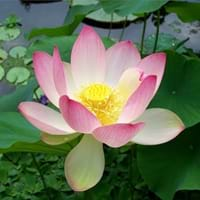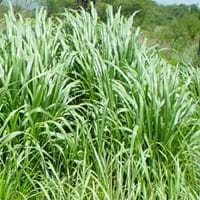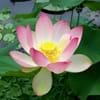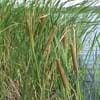Life Span
Perennial
Perennial
Origin
Southern Asia
Middle Africa
Types
Not Available
Not Available
Number of Varieties
Not Available
Habitat
Ponds
Floodplains, Forest margins, Tropical regions, waterways, Wet lands, Woodlands
USDA Hardiness Zone
9-12
7-11
AHS Heat Zone
12-3
12 - 1
Sunset Zone
21,22
A1, A2, A3, H1, H2, 1a, 1b, 2a, 2b, 3a, 3b, 4, 5, 6, 7, 8, 9, 10, 11, 12, 13, 14, 15, 16, 17, 18, 19, 20, 21, 22, 23, 24
Habit
Clump-Forming
Clump-Forming
Flower Color
White, Red, Pink, Light Pink, Hot Pink, Rose, Coral
Sandy Brown
Flower Color Modifier
Bicolor
Bicolor
Fruit Color
Non Fruiting Plant
Non Fruiting Plant
Leaf Color in Spring
Lime Green, Sea Green
Purple
Leaf Color in Summer
Lime Green, Sea Green
Light Green
Leaf Color in Fall
Lime Green, Sea Green
Purple
Leaf Color in Winter
Not Available
Purple
Leaf Shape
Orbicular
Long Linear
Plant Season
Summer, Fall
Spring, Summer, Fall, Winter
Sunlight
Full Sun, Partial Sun
Full Sun
Growth Rate
Fast
Very Fast
Type of Soil
Clay, Loam
Clay, Loam, Sand
The pH of Soil
Neutral
Acidic, Neutral, Alkaline
Soil Drainage
Poorly Drained
Well drained
Bloom Time
Late Spring, Early Summer, Summer, Late Summer
Summer, Late Summer
Tolerances
Wet Site
Cold climate, Drought, Salt
Where to Plant?
Container, In Water, Pot
Ground
How to Plant?
From Rhizomes, Seedlings
Budding, Seedlings
Plant Maintenance
Medium
Low
Watering Requirements
Requires 4 to 8 inches of water above the soil line
Requires regular watering, Water more in summer
In Summer
Lots of watering
Lots of watering
In Spring
Moderate
Moderate
In Winter
Average Water
Average Water
Soil pH
Neutral
Acidic, Neutral, Alkaline
Soil Type
Clay, Loam
Clay, Loam, Sand
Soil Drainage Capacity
Poorly Drained
Well drained
Sun Exposure
Full Sun, Partial Sun
Full Sun
Pruning
Cut away fading foliage
Remove dead leaves, Remove dead or diseased plant parts
Fertilizers
20N–4.4P–16.6K at 20-d intervals
Nitrogen, organic fertlizers
Pests and Diseases
Aphids, Caterpillars
Insects, Red blotch
Plant Tolerance
Drought
Cold climate, Drought, Salt
Flower Petal Number
Single, Double, Semi-Double
Single
Foliage Texture
Bold
Fine
Foliage Sheen
Matte
Glossy
Attracts
Beetles, Insects
Birds, Flying insects
Allergy
Constipation
Asthma, breathing problems
Aesthetic Uses
Beautification
Not Used For Aesthetic Purpose
Beauty Benefits
Promotes healthy skin, Provides herbal hair care
No Beauty Benefits
Environmental Uses
Air purification
Air purification, Amazing growth rate, Food for animals, Food for insects, Prevent Soil Erosion, Shelter for wildlife, Wildlife, Windbreak
Medicinal Uses
Antidiarrhoeal, Astringent, Cancer, Cardiotonic, Febrifuge, Hypotensive, Resolvent, Stomachic, Tonic
Eye Problems, Headache, Skin Disorders, Wounds
Part of Plant Used
Flowers, Leaves, Root, Seeds, Stem
Leaves, Seeds
Other Uses
Leaves are used to wrap small parcels, Roasted seed is used as a coffee substitute, Root is used as a vegetable
Food for animals, Used As Food
Used As Indoor Plant
Yes
No
Used As Outdoor Plant
Yes
Yes
Garden Design
Feature Plant, Tropical, Water Gardens
Bedding Plant, Feature Plant, Foundation, Mixed Border
Botanical Name
NELUMBO nucifera
PENNISETUM purpureum 'Prince'
Common Name
East Indian Lotus, Sacred Lotus
Elephant Grass
In Hindi
पवित्र कमल
हाथी घास
In German
Heiliges Lotus
Elefantengras
In French
Lotus Sacré
l'herbe à éléphant
In Spanish
loto sagrado
pasto elefante
In Greek
ιερή Lotus
ελέφαντα χόρτο
In Portuguese
Lotus sagrado
capim-elefante
In Polish
Sacred Lotus
trawa słoniowa
In Latin
sacra Lotus
elephanti herba
Phylum
Magnoliophyta
Magnoliophyta
Class
Magnoliopsida
Liliopsida
Family
Nymphaeaceae
Poaceae
Clade
Angiosperms, Eudicots
Angiosperms, Commelinids, Monocots
Tribe
Not Available
Paniceae
Subfamily
Nelumbonaceae
Panicoideae
Number of Species
Not Available
Not Available
Importance of Sacred Lotus and Elephant Grass
Want to have the most appropriate plant for your garden? You might want to know the importance of Sacred Lotus and Elephant Grass. Basically, these two plants vary in many aspects. Compare Sacred Lotus and Elephant Grass as they differ in many characteristics such as their life, care, benefits, facts, etc. Every gardener must at least have the slightest clue about the plants he wants to plant in his garden. Compare their benefits, which differ in many ways like facts and uses. The medicinal use of Sacred Lotus is Antidiarrhoeal, Astringent, Cancer, Cardiotonic, Febrifuge, Hypotensive, Resolvent, Stomachic and Tonic whereas of Elephant Grass is Eye Problems, Headache, Skin Disorders and Wounds. Sacred Lotus has beauty benefits as follows: Promotes healthy skin and Provides herbal hair care while Elephant Grass has beauty benefits as follows: Promotes healthy skin and Provides herbal hair care.
Compare Facts of Sacred Lotus vs Elephant Grass
How to choose the best garden plant for your garden depending upon its facts? Here garden plant comparison will help you to solve this query. Compare the facts of Sacred Lotus vs Elephant Grass and know which one to choose. As garden plants have benefits and other uses, allergy is also a major drawback of plants for some people. Allergic reactions of Sacred Lotus are Constipation whereas of Elephant Grass have Asthma and breathing problems respectively. Having a fruit bearing plant in your garden can be a plus point of your garden. Sacred Lotus has no showy fruits and Elephant Grass has no showy fruits. Also Sacred Lotus is not flowering and Elephant Grass is not flowering . You can compare Sacred Lotus and Elephant Grass facts and facts of other plants too.





